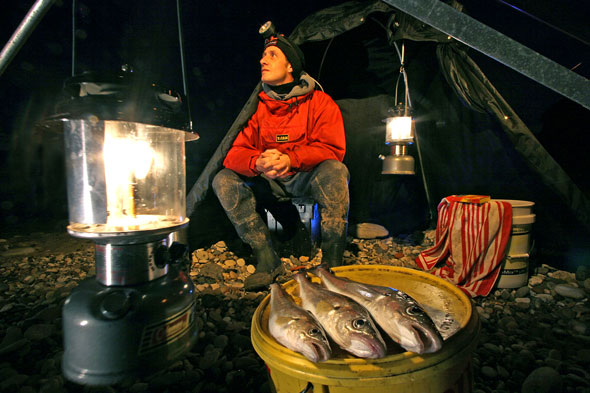With autumn banging on the door, fading daylight is like the ringing of the dinner bell as whiting prepare to move closer to the beach.
With flat calm seas and darkness, you can now expect the rod-tip to be continually rattling as the whiting shoals begin their annual invasion.
The beauty of targeting whiting is that heavy gear is not required. Instead, a lighter approach ensures that you get maximum sport from this ferocious feeder.
If you want to push the boundaries further, a carp rod coupled with a fixed-spool reel loaded with braid can ensure that a treble shot of fish will set the pulse racing sky high.
Targeting whiting is not difficult, as long as you follow some handy advice. Bait can be critical, with worms and fish baits the big attractors. While 100 lugworms may last only a couple of hours, especially if you’re using multi-hook rigs, piling the bait on to a hook can result in failure.
Three-hook flapping rigs are generally used by whiting hunters, and a size 2 Aberdeen pattern will connect virtually every time.
A single lugworm tipped with a thumbnail of mackerel is deadly. Pushing three or even four lugworms on to a hook and followed by a huge chunk of mackerel means that a whiting will chomp away without ever finding the hookpoint.
Whiting hit the bait hard and bites can be exciting, especially if you hook three. A favoured method is to let the bites develop and not to strike at the first sign of activity. Bites will be signalled by a succession of rattles and pulls followed by the line dropping slack. This is the time to pick up the rod and lift into the bite.
To keep your session running along smoothly, try to have a pre-baited rig ready for the next cast – known as double patting. This will save you a lot of time.
Daylight hours may involve casting further to reach the fish that are waiting to move inshore. But when darkness arrives, short casting to inward-bound whiting can sometimes create hectic sessions that don’t even allow time for a cup of tea!
Whiting can make good eating, but try to return what is not needed. The legal taking size for a whiting is 27cm which may be a fish in the region of 9oz, but most shore fishermen will only keep whiting that are around 1lb.
Feeding whiting also attract the interest of other larger species, such as cod or bass. On the odd occasion, one of these may swallow a hooked whiting.
A good tactic is to use a Pennell rig with a smaller hook on the top and bigger hook at the bottom, normally a 6/0. Slide a small piece of mackerel on to the top hook to catch a whiting, but leave the bigger hook bare. A big cod or bass may come along and take the whiting – and your bigger hook.
Calm nights with flat seas are the best times to target whiting and if the tide is progressing to spring – even better.







